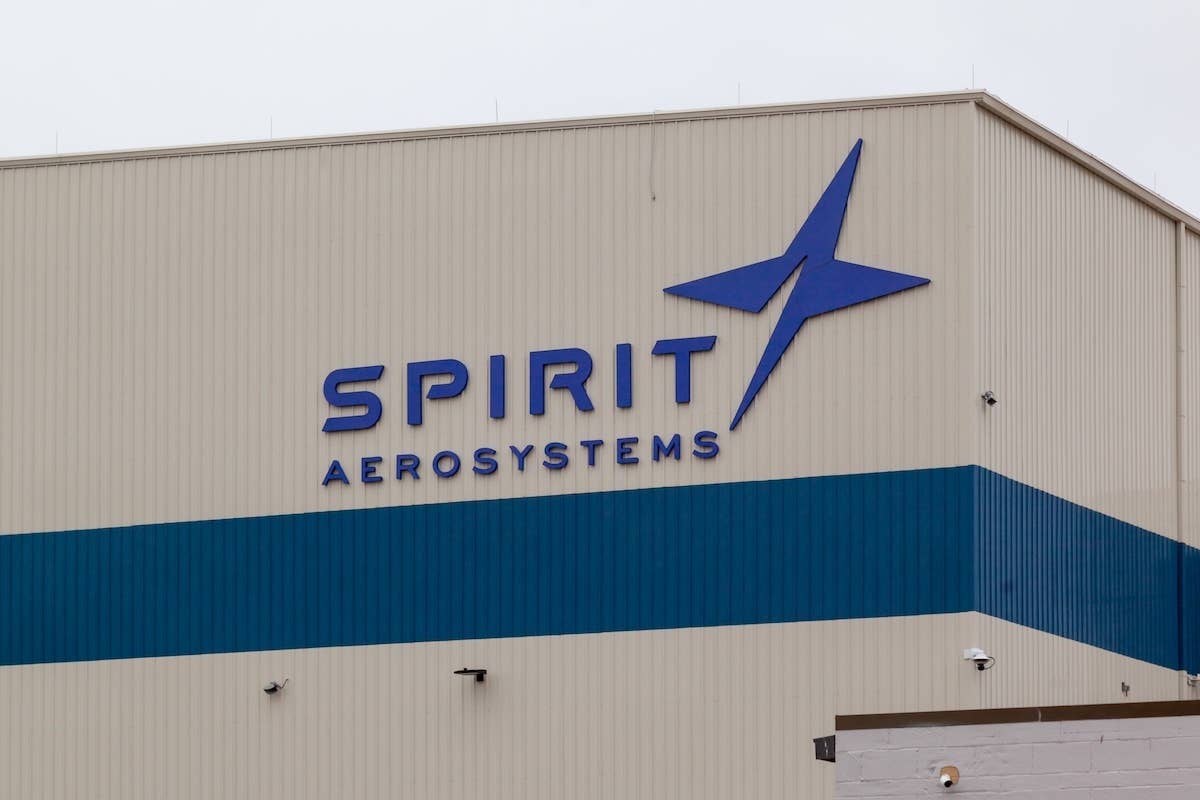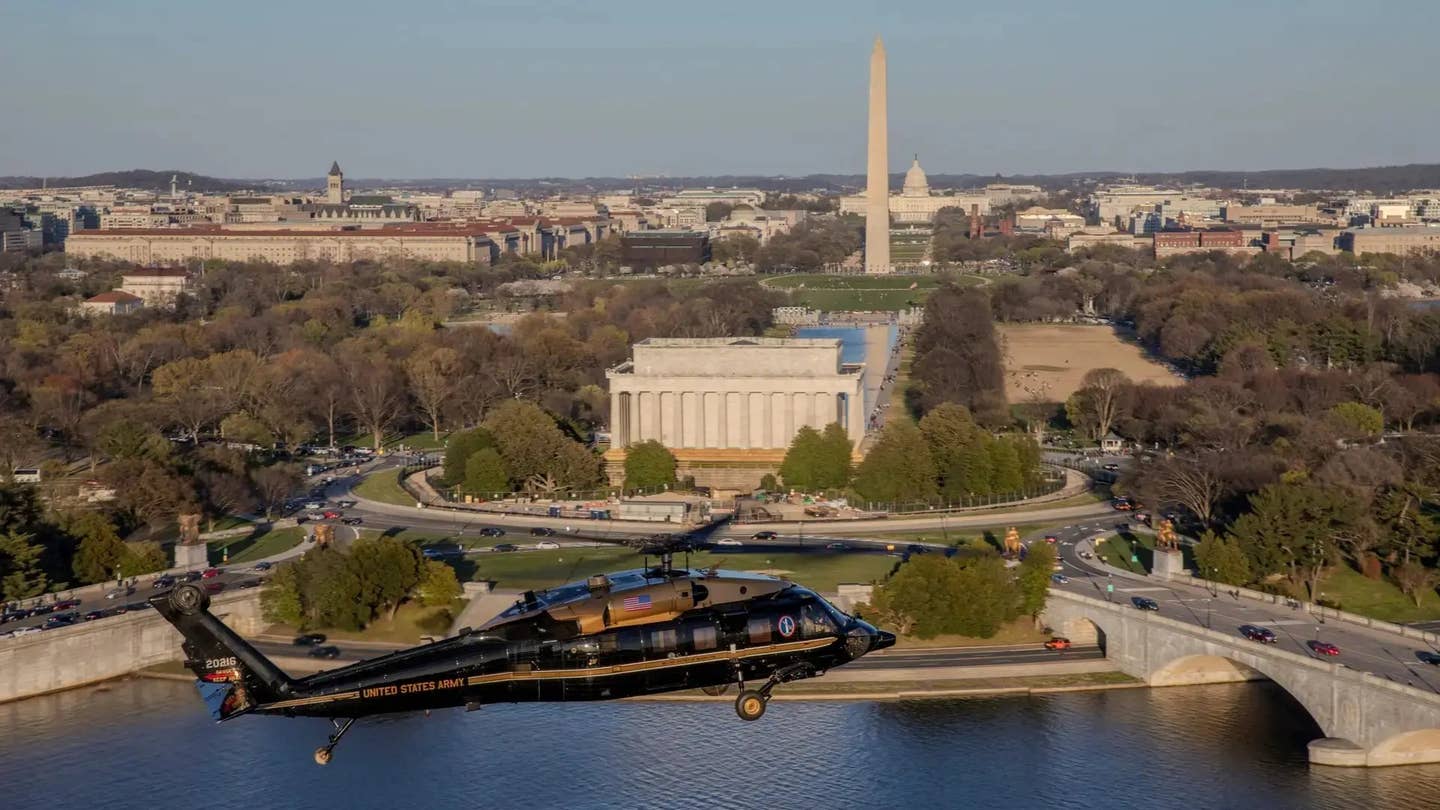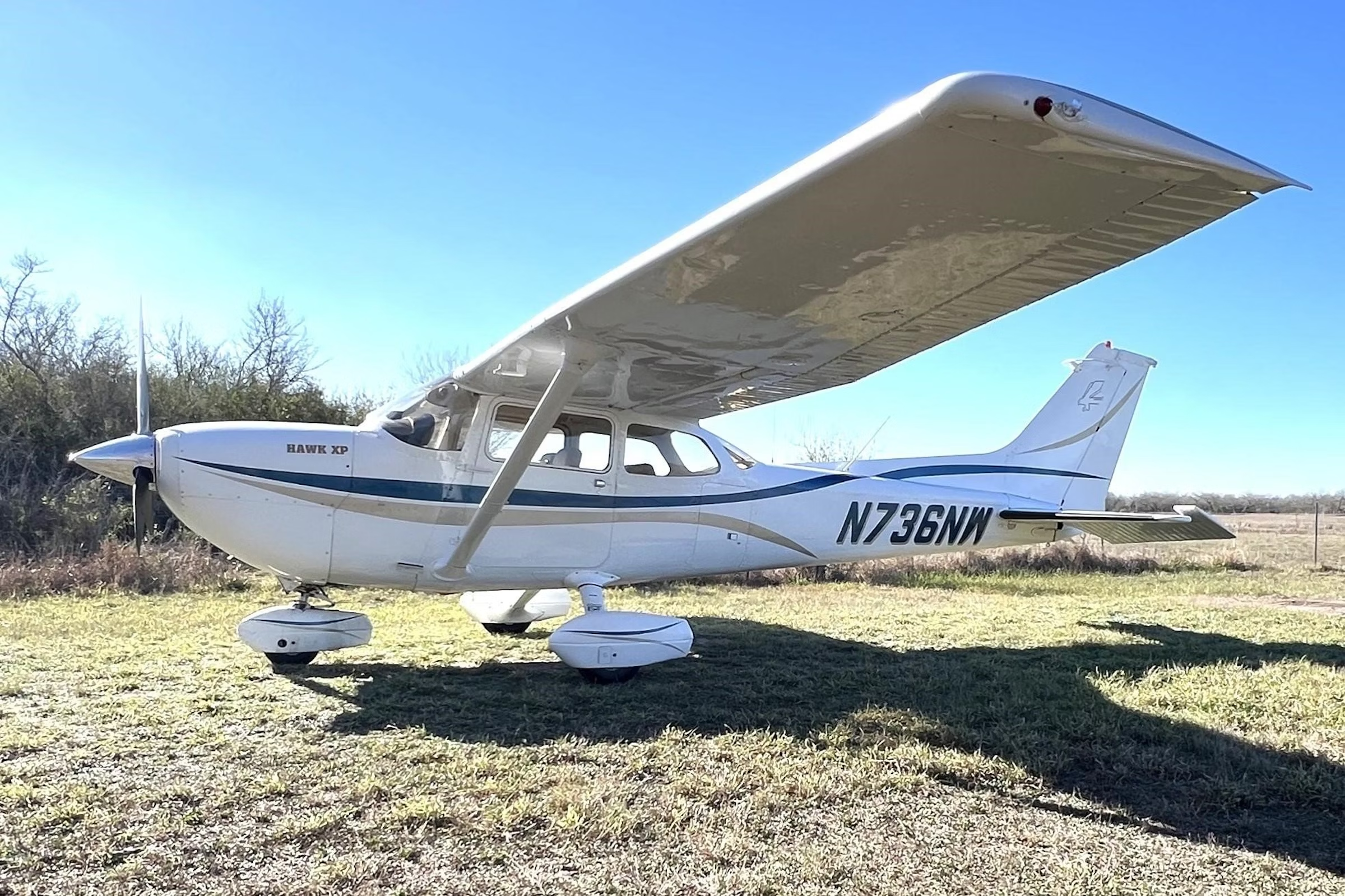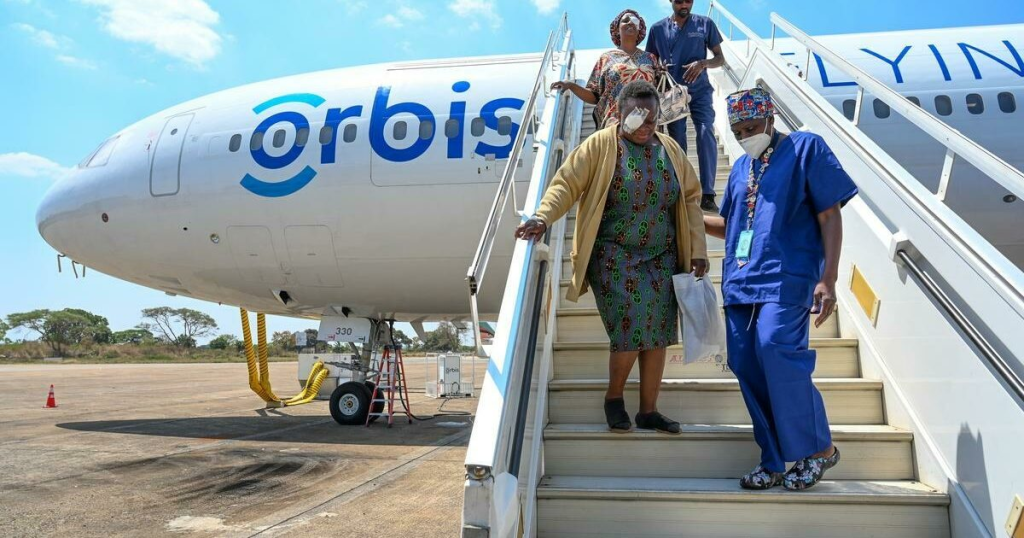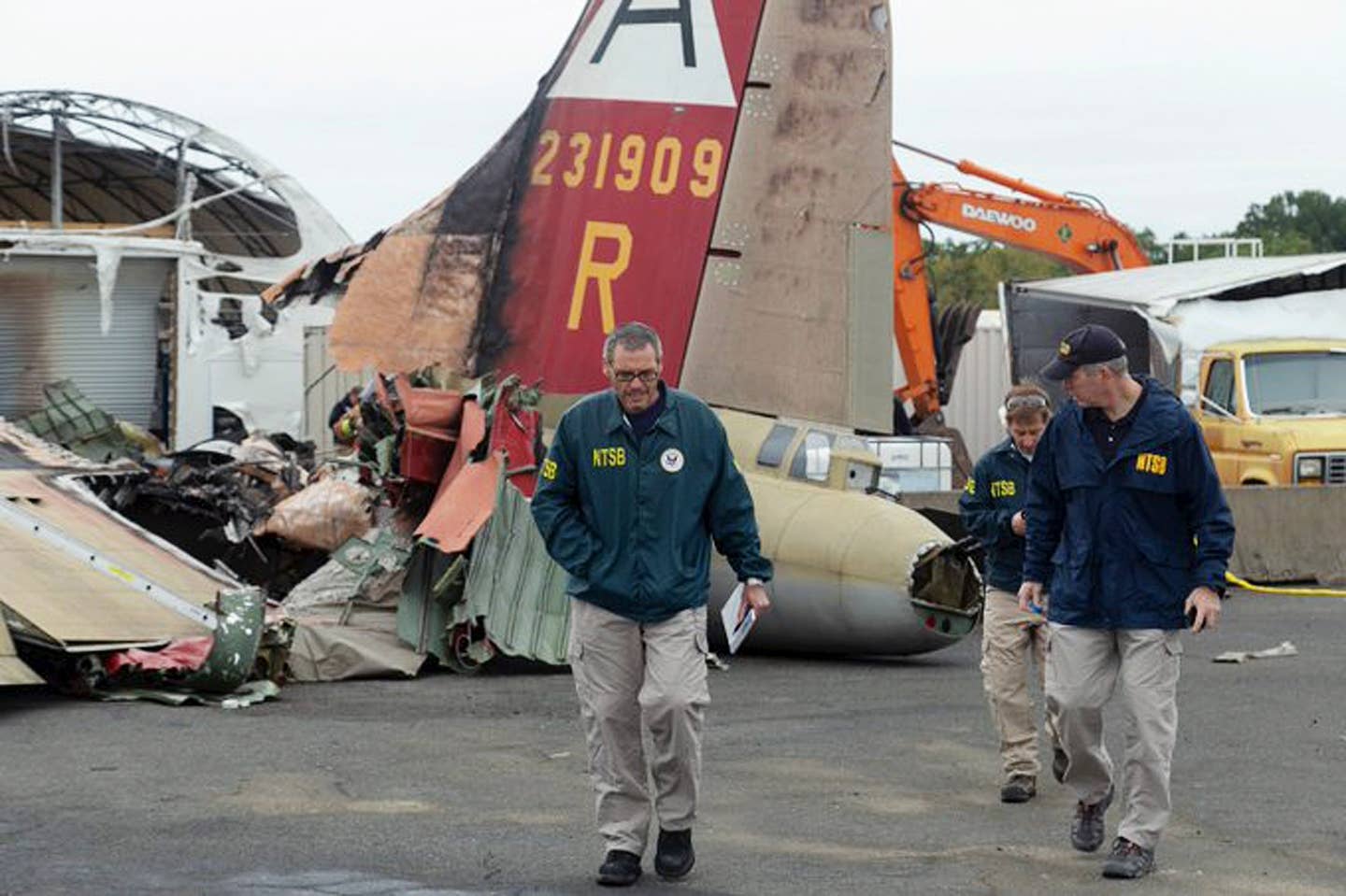
Most of the B-17 was destroyed by a post-crash fire. NTSB
The FAA last week ruled the Collings Foundation could no longer accept money from people who wanted to ride on the organization’s World War II aircraft. The ruling included a critical look at the NTSB and the agency’s finding following the October 2, 2019, crash of the foundation’s B-17G, “Nine O Nine” at Bradley International Airport (KBDL) in Windsor Locks, Connecticut. Though the NTSB conducted the investigation at the accident site last year, the notice immediately rescinding the foundation’s exemption to carry paying passengers came from the FAA. The agency’s action also halted a Collings Foundation request to renew its current exemption, an action required every two years.
The accident occurred shortly after the WWII bomber took off from KBDL about 9:45 am local time. At 9:50 am, one of the B-17 crewmembers told the tower they were experiencing an engine problem and would return to land on KBDL’s Runway 6. The crippled aircraft never climbed higher than 500 feet agl. The B-17 crashed on short final to Runway 6 and burst into flames after striking the airport’s deicing facility. The accident killed five passengers as well as the two pilots. Another six people aboard were injured.
The Collings Foundation fleet was operating under Exemption 6540P of the federal regulations that allow certain vintage aircraft with either an experimental or a limited category airworthiness certificate to carry passengers as part of the living history flight experience. The FAA “historically found the preservation of US aviation history to be in the public interest. Organizations offered to provide short in-flight experiences in exchange for compensation, leading to the term nostalgia flights and later living history flight experience and provided a means for private civilian owners to offset the considerable restoration, maintenance and operational costs.”
The FAA said the Collings Foundation failed to comply with a number of the exemption’s requirements as its reason for the enforcement action. One dealt with the crew chief assigned to the B-17. Crew chiefs are required to assist the pilots with a number of duties on each flight and require extensive training before being allowed serve in that position. The crew chief on the accident flight—who survived—later testified he’d never received any training on the aircraft. He also said he had no knowledge of what his duties should have been while aboard the flight.
The Collings Foundation was required to have established and maintained a safety management system for the entire operation. A safety management system is designed to promote a culture of safety and allow any employee—without fear of retribution—to feed important safety information back to a central source to ensure problems are resolved. The crew chief stated he had no knowledge that the foundation even had an SMS.
The investigation uncovered numerous unresolved maintenance squawks on the B-17. The PIC of the accident flight, Ernest “Mac” McCauley, had flown “Nine O Nine” for 20 years and had logged more time on the model than any other pilot. McCauley held an A&P certificate and served as the foundation’s director of maintenance.
The NTSB discovered magneto and ignition failures on the B-17’s number four nine-cylinder radial engine. “Inspection and testing of engine 4 left magneto revealed the movement of the safety-wired lead caused grounding to the case, which rendered the magneto lead inoperative,” said the FAA report. The right magneto was also “unserviceable.” The point gap on the magneto’s points was less than half of what was called for in service documents that led to the right mag delivering “weak or no spark” to four of the nine cylinders. All spark-plug gaps on the number three engine were also found to be significantly out of tolerance, making it likely neither engine on the right side was producing normal power. Witnesses reporting seeing the aircraft flying right wing low as it attempted to return to KBDL.
Finally, the investigation found the aircraft’s maintenance records lacked key pieces of information that made it impossible to verify whether some required maintenance had ever been performed on “Nine O Nine.” Though the FAA did not ask for comments to the Collings Foundation exemption renewal, the agency said it received more than 1,500. “Most were from individuals who cited the historical and sentimental value of allowing living history flight to continue.” The comments are believed to have been received before the FAA published the list of alleged violations against the Collings Foundation aircraft and the depth of its issues became known.

Sign-up for newsletters & special offers!
Get the latest FLYING stories & special offers delivered directly to your inbox


